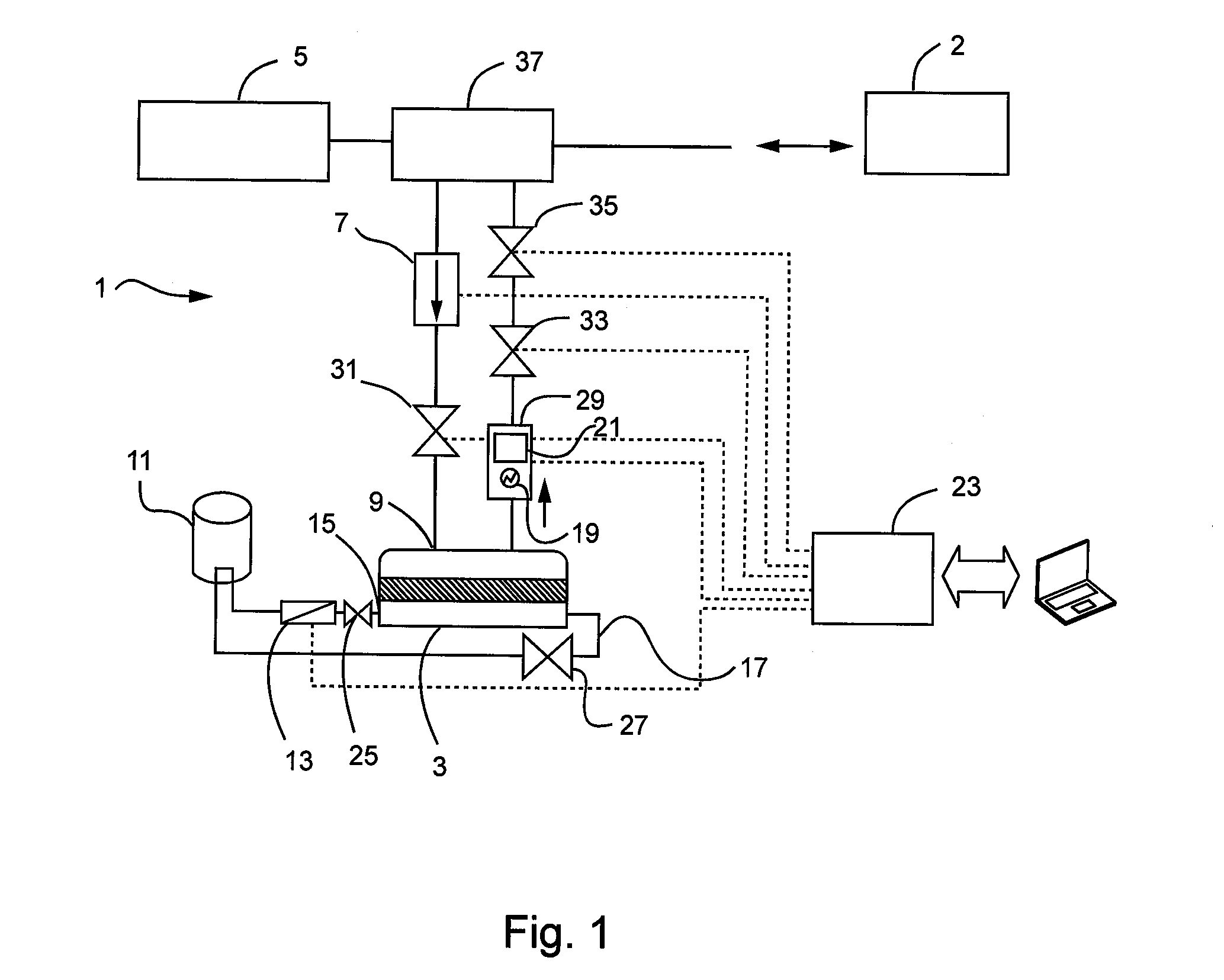Metabolic Simulator Having a Catalytic Engine
- Summary
- Abstract
- Description
- Claims
- Application Information
AI Technical Summary
Benefits of technology
Problems solved by technology
Method used
Image
Examples
working examples
[0030]To make sure the test results reflected the catalytic carbon dioxide generator's 3 behavior, all of the tests were performed with the polisher disabled. The heated tubing was activated to prevent water condensation in the tubing. The fan speed on the cooler was set at 50% during all tests.
example 1
[0031]The fuel used in the first example consists of 99.8% methanol diluted in water. The molar concentration in the tests varied between 1 and 4 molar.
[0032]With reference to FIGS. 3 and 4, the methanol was diluted in water and the perm selective film in the catalytic carbon dioxide generator only allowed methanol molecules to pass through to the catalyst, leaving the water in the fuel stream. Since methanol and water are both a clear solution, it is not visible to the user how much methanol is left in the fuel solution. Tests were performed to investigate the speed of fuel depletion with different molarities and volumes. During the first depletion test, the fuel concentration was 1 molar methanol in distilled water. Air and fuel flow speed were kept at a constant level and CO2 production was measured every 5 minutes. After 10 minutes, the CO2 production started to drop with a linear gradient. The same test was executed with a volume of 250 mL and a 4 molar fuel concentration. At a...
example 2
[0034]With reference to FIGS. 5 and 6, theoretically, the {dot over (V)}CO2 produced by the catalytic carbon dioxide generator should be controllable by getting the air and fuel flow at a correct setpoint. When the fuel flow is lowered, less fuel molecules are fed to the catalyst, thus fewer molecules will be oxidized and less CO2 will be produced. As such, the catalytic carbon dioxide generator was run at different air and fuel flow rates. During these tests, the fuel was not recycled. The data collected in FIGS. 5 and 6 shows a difference in {dot over (V)}CO2 due to fuel flow variation. At 4 molar the fuel flow did not influence {dot over (V)}CO2. This is caused by the high concentration of methanol. Even at lower fuel speeds, there were a lot more molecules of methanol available than there were molecules of O2 present in the airstream that are needed for the oxidation of methanol.
[0035]The above discussion demonstrates that it is possible to control the flow rate or stream of CO2...
PUM
 Login to View More
Login to View More Abstract
Description
Claims
Application Information
 Login to View More
Login to View More - R&D
- Intellectual Property
- Life Sciences
- Materials
- Tech Scout
- Unparalleled Data Quality
- Higher Quality Content
- 60% Fewer Hallucinations
Browse by: Latest US Patents, China's latest patents, Technical Efficacy Thesaurus, Application Domain, Technology Topic, Popular Technical Reports.
© 2025 PatSnap. All rights reserved.Legal|Privacy policy|Modern Slavery Act Transparency Statement|Sitemap|About US| Contact US: help@patsnap.com



